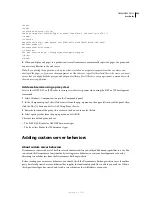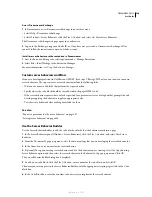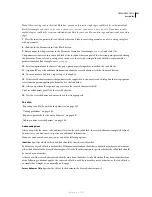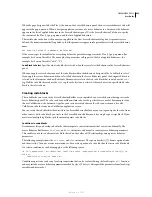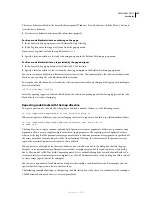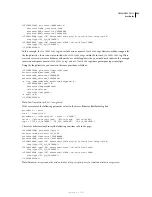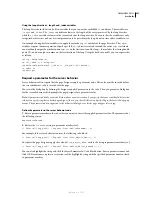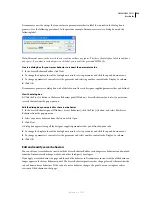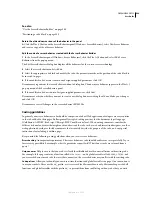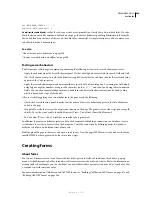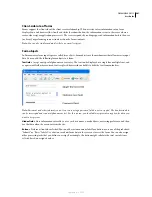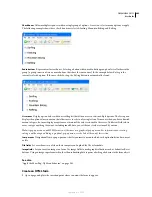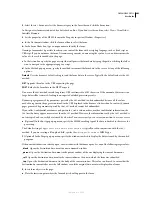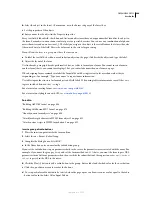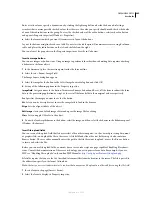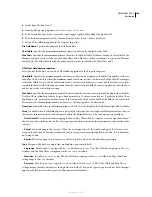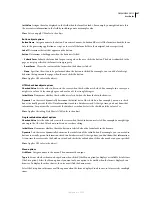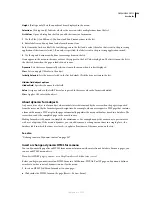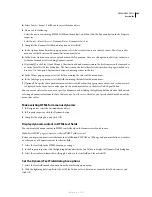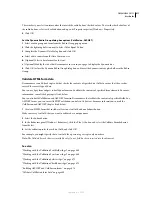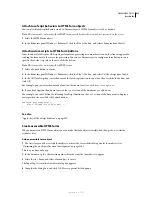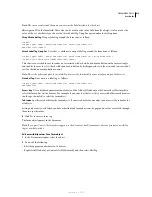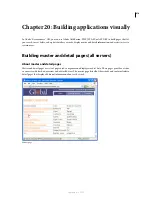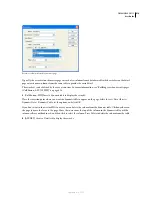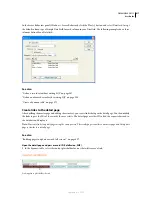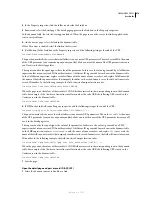
DREAMWEAVER CS3
User Guide
603
2
Select Insert > Form, or select the Forms category in the Insert bar and click the Form icon.
In Design view, forms are indicated by a dotted red outline. If you don’t see this outline, select View > Visual Aids >
Invisible Elements.
3
Set the properties of the HTML form in the Property inspector (Window >Properties):
a
In the Document window, click the form outline to select the form.
b
In the Form Name box, type a unique name to identify the form.
Naming a form makes it possible to reference or control the form with a scripting language, such as JavaScript or
VBScript. If you do not name the form, Dreamweaver generates a name using the syntax
formn
, and increments the
value of
n
for each form added to the page.
c
In the Action box, specify the page or script that will process the form data by typing the path, or clicking the folder
icon to navigate to the appropriate page or script.
d
In the Method pop-up menu, specify the method to transmit the form data to the server. Set any of the following
options:
Default
Uses the browser’s default setting to send the form data to the server. Typically, the default value is the
GET
method.
GET
Appends the value to the URL requesting the page.
P
O
ST
Embeds the form data in the HTTP request.
Do not use the
GET
method to send long forms. URLs are limited to 8192 characters. If the amount of data sent is too
large, data will be truncated, leading to unexpected or failed processing results.
Dynamic pages generated by parameters passed by the
GET
method can be bookmarked because all the values
needed to regenerate the page are contained in the URL displayed in the browser’s Address box. In contrast, dynamic
pages generated by parameters passed by the
POST
method cannot be bookmarked.
If you collect confidential user names and passwords, credit card numbers, or other confidential information, the
POST
method may appear more secure than the
GET
method. However, the information sent by the
POST
method is
not encrypted and can easily be retrieved by a hacker. To ensure security, use a secure connection to a secure server.
e
(Optional) In the Enctype pop-up menu, specify the MIME encoding type of the data submitted to the server for
processing.
The default setting of
application/x-www-form-urlencode
is typically used in conjunction with the
POST
method. If you are creating a file-upload field, specify the
multipart/form-data
MIME type.
f
(Optional) In the Target pop-up menu, specify the window in which to display the data returned by the invoked
program.
If the named window is not already open, a new window with that name opens. Set any of the following target values:
_blank
Opens the destination document in a new unnamed window.
_parent
Opens the destination document in the parent window of the one displaying the current document.
_self
Opens the destination document in the same window as the one in which the form was submitted.
_top
Opens the destination document in the body of the current window. This value can be used to ensure that the
destination document takes over the full window even if the original document was displayed in a frame.
4
Insert form objects in the page:
a
Place the insertion point where the form object should appear in the form.
September 4, 2007

